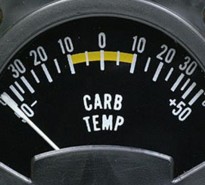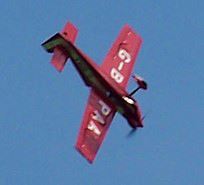In just about every issue of any of the various flight safety publications there will be accidents reported where carburettor icing was suspected of having been the primary cause of the subsequent accident.
All pilots must by now be very familiar with the carb icing prediction chart that we see frequently published along with the accident report. However, familiarity with this chart is a very blunt instrument indeed as a tool to advise that carb icing is imminent. What it can’t tell the pilot is what is actually happening in the carburettor to alter the state of the incoming air to form ice...
It’s the oldest accident in aviation. In the pioneering days they used to call it a Chute Mortelle – then it was little understood. Commonly known today as a stall/spin accident, despite now being fully understood it relentlessly continues to kill and maim pilots and passengers on a regular basis.
Yet of all the accidents in aviation waiting around the corner, it’s the most avoidable. It should never, ever, happen as the rules of avoidance are so simple and fundamental to aeroplane handling.
Airshows often provide the stimulus for people to learn to fly. Later, having achieved that objective, a few pilots are further motivated to take up display flying themselves. However, before displaying at a public airshow, pilots are required to have demonstrated their competence to hold a CAA Display Authorisation in their chosen discipline. That legal requirement applies to anything from the demonstration fly-past to unlimited aerobatics and any other aerial act one could expect to see at an airshow.
This article is principally intended to take a step back from there and look at the safety implications a pilot should consider on the path to official evaluation or even just for personal skill development...
Over the years there have been a number of fatal accidents involving some very experienced air display pilots, without any satisfactory answer as to the root cause. Usually it’s just eventually put down to another case of pilot error – but the big “WHY” – the common factor at the root never seems to be answered.
Just what motivated these pilots to cut the safety margins never seems to be adequately explained. Following an accident there’s always much conjecture within the air display fraternity but with no real answers other than the usual nonspecific conclusion of pilot error – he didn’t have enough height is more often than not blamed - that’s always true but it doesn’t begin to explain why he didn’t...




